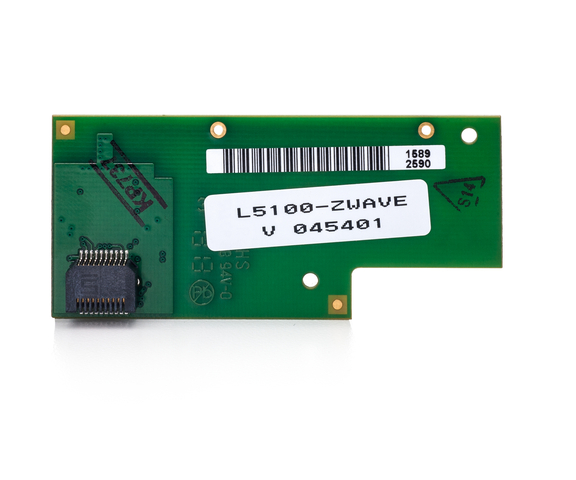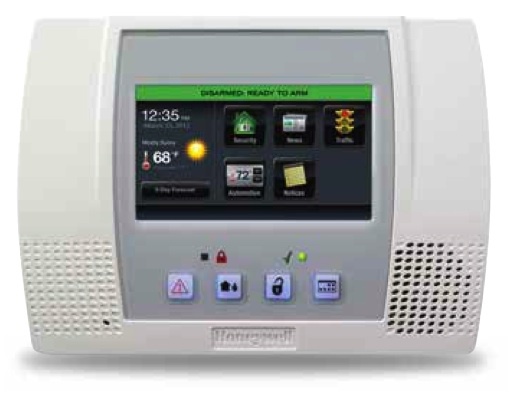I'm not into saying "never", so I won't say that Alarm Grid will never make its own security system. But we get a significant number of people asking why we don't do it now, so I've had a lot of practice answering this question. While it might be in the cards someday, let me explain our thinking on why we have made the decision to sell other company's security systems rather than make our own. Our decision is, I hope you will see, consumer-centric. We think that it is better for you, and after you read this, I am certain you'll agree.
1) Creating a better security system than already exists would be really really really expensive...
Modern security systems have hours and hours and hours and hours of R&D. Hardware requires some incredible expertise, and the best hardware designers do not work at Alarm Grid. In fact, those engineers capable of making amazing systems are at places like General Electric and Honeywell. 2Gig is a lab full of former Honeywell-ers, and there are a few other companies that are full of pretty capable hardware creators.
Creating a security system that is better than any of these companies is going to be nearly impossible. There are options available to us. We could, for example, go to a wholesale site like alibaba.com and source foreign-made security systems, slap our sticker on them, and ship them to you. But whatever the case, there is one thing I can be sure of in a world where we go that route: our security system will be inferior to the high quality Honeywell security systems we sell now.
 A lot of the systems that are "made" by other companies lack many of the basic features that Honeywell builds into their most popular system, the Honeywell LYNX such as APL (colloquially known as smash & crash), baby-sitter codes, or a graphical user interface that is simple to use and program. Honeywell and these other companies that make big systems have poured many millions of dollars into their R&D. Are their systems perfect? Not by a long shot. But they are very good.
A lot of the systems that are "made" by other companies lack many of the basic features that Honeywell builds into their most popular system, the Honeywell LYNX such as APL (colloquially known as smash & crash), baby-sitter codes, or a graphical user interface that is simple to use and program. Honeywell and these other companies that make big systems have poured many millions of dollars into their R&D. Are their systems perfect? Not by a long shot. But they are very good.
If we ever put our name on a security system, if we are going to willingly call something a product that we created, we are only going to do it because the quality of the system is so incredibly high and the features included in the system are so surprisingly many. Until then, you can expect a store full of Honeywell security systems (and eventually other brands will make it into our catalog as well).
2) Generally companies that make their own security systems are doing it to give the impression of being the good guys... but they aren't...
There are a lot of companies out there that have decided to go the make-their-own-security-system route. They pitch them as more affordable than the alternatives, and many of them have positioned their company as the security company that is responding to the evils of deceptive contracts and pushy sales.
While these companies may provide no-contract alarm monitoring, much like we do, the fact that they have a proprietary system effectively guarantees that their customers don't leave. Unhappy with your system or service after 5 or 6 months? Too bad. If you want to secure your home with someone else's service after you've purchased their equipment, you're going to have to shell out money for an entirely new security system. So while you don't have to pay to terminate a contract early, the price of leaving their company is going to be between $200 and $500 (more if your house is very large). That's about what it would cost to terminate a contract early. So... what's the difference?
3) We View Ourselves Fundamentally as Service Providers
Alarm Grid isn't a hardware manufacturer. We just aren't.
We know a lot about the products we sell. If you check out our reviews.

You will see that people think that we are more knowledgeable than any other company with regard to our featured product lines. What we have built this company on is the desire to make sure that our customers get the best service they can. We don't think that the gap in the industry is on the hardware side. There are a lot of really competent hardware manufacturers. But all you need to do is look at the public facing twitter feeds or read a few reviews of some of the nations biggest alarm companies to see that there is a huge gap on the service side.
We see it a lot when our technicians answer phone calls. Customers call after having left a company that tied them into a long-term contract, pushed them into getting services they didn't need, and they are suspicious of us when they call. We are able to restore their faith in humanity by being kind and answering their question with no pretense.
Focusing on doing things outside of our core competency - such as trying to build a team to put together a hardware system - would require us to sacrifice the human side of our business which is what we're more interested in the first place.















 AlarmNet has given its
AlarmNet has given its 
 Just a little while back,
Just a little while back,  A lot of the systems that are "made" by other companies lack many of the basic features that Honeywell builds into their most popular system, the
A lot of the systems that are "made" by other companies lack many of the basic features that Honeywell builds into their most popular system, the 

 Unfortunately, the President of Alarm Grid, Sterling Donnelly, has decided that tonight is the night to test out his new herd of flying reindeer. As you can imagine, flying reindeer through the air is a bit hazardous in this age of aviation. Because we don't want him getting hurt, all of us have decided to go and watch (supervise) President Donnelly as he performs his very unsafe antics. That said, as a result of Sterling's insistence on flying his reindeer around tonight, we are going to have to close the offices tomorrow, which means no tech support on Christmas day.
Unfortunately, the President of Alarm Grid, Sterling Donnelly, has decided that tonight is the night to test out his new herd of flying reindeer. As you can imagine, flying reindeer through the air is a bit hazardous in this age of aviation. Because we don't want him getting hurt, all of us have decided to go and watch (supervise) President Donnelly as he performs his very unsafe antics. That said, as a result of Sterling's insistence on flying his reindeer around tonight, we are going to have to close the offices tomorrow, which means no tech support on Christmas day.